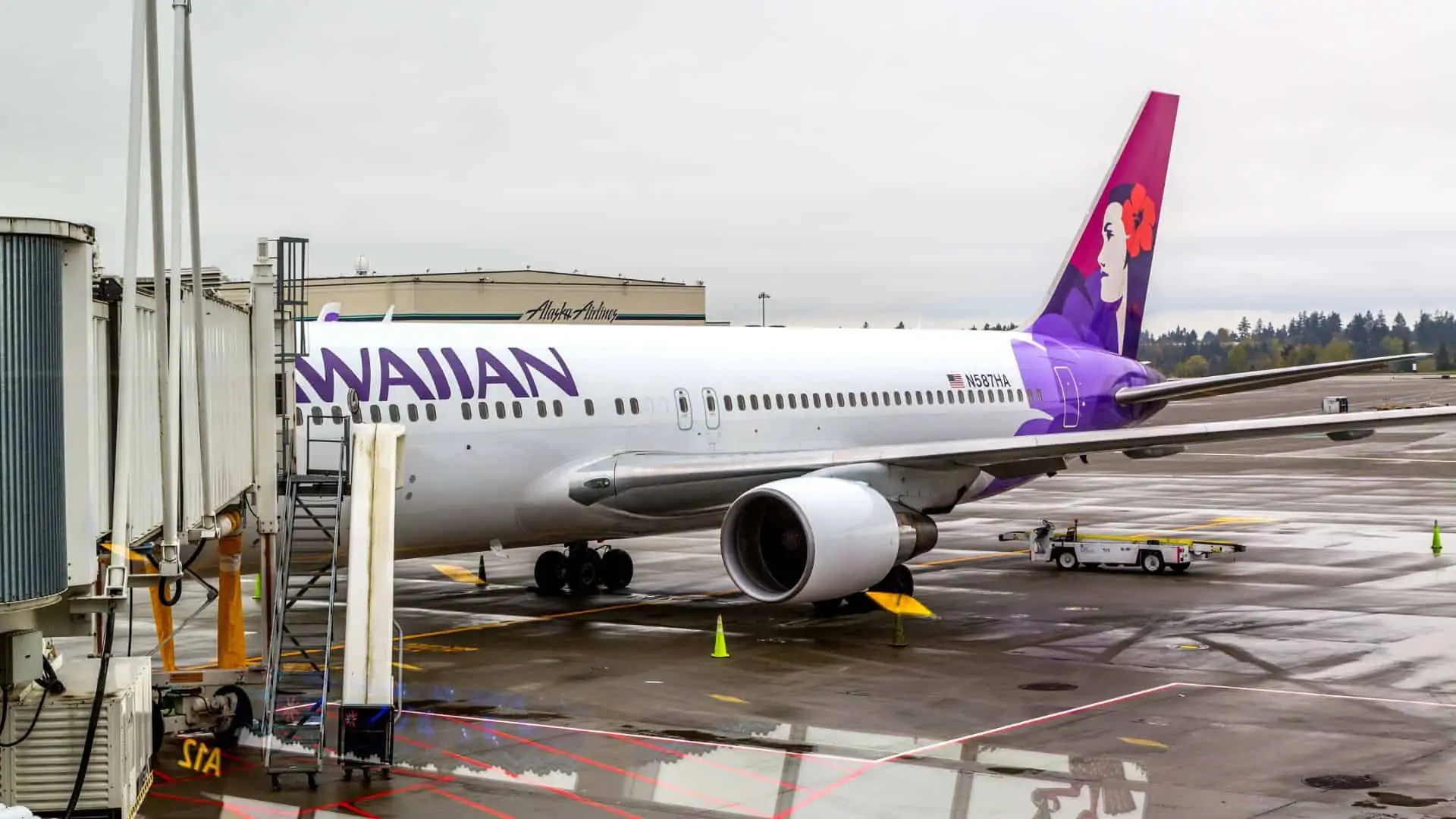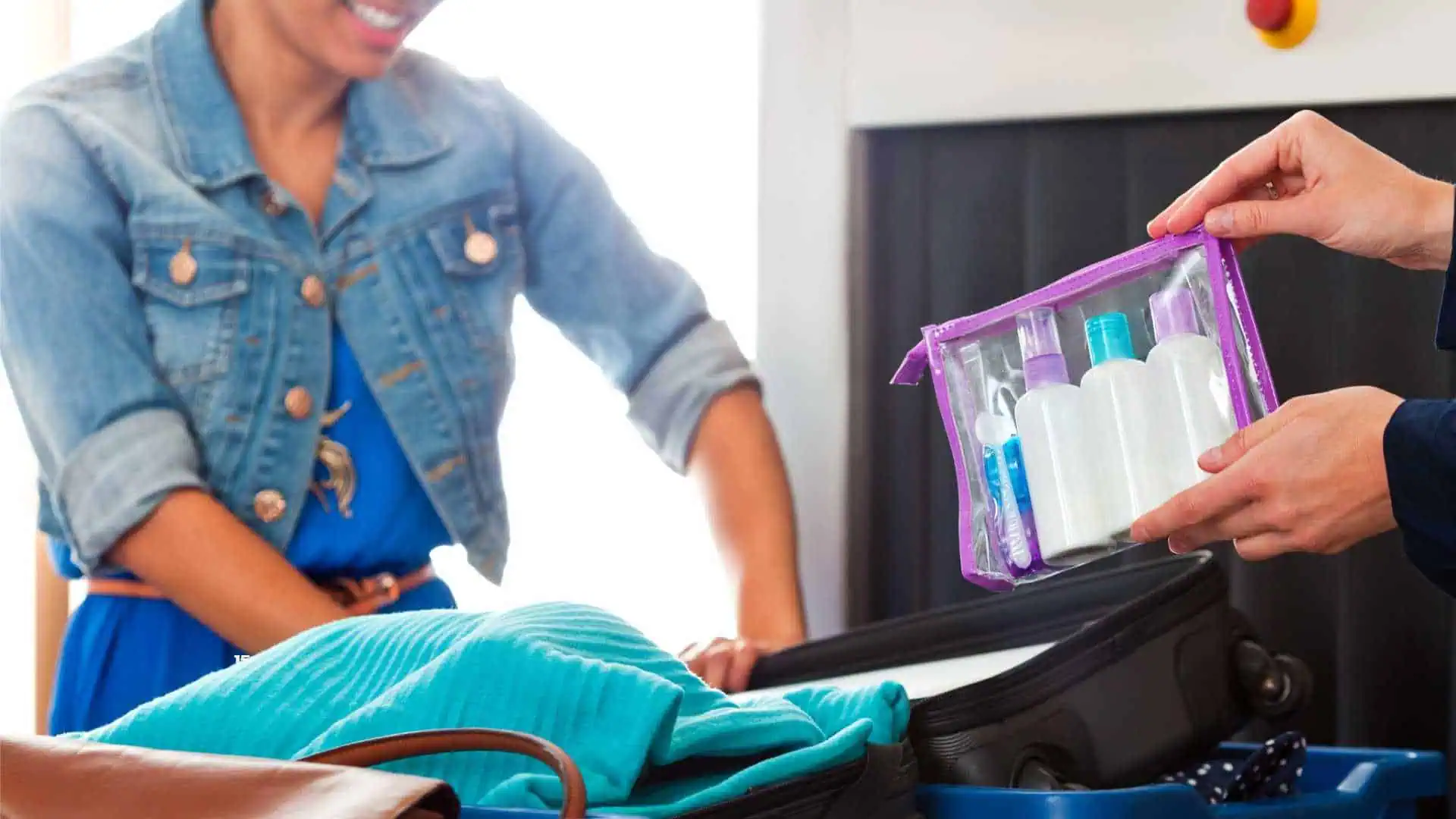Summertime is usually the time for travel. When you travel, there are lots of devices that you need to bring that require batteries to operate.
You will need your camera, laptop, other personal electronics and other battery-operated equipment which are necessary to make your vacation fun.
You might consider AA batteries as small, harmless objects. But they actually can pose a severe threat to aircraft safety when they are not properly packed and handled. This is the reason why it is important to know are AA batteries allowed on planes.
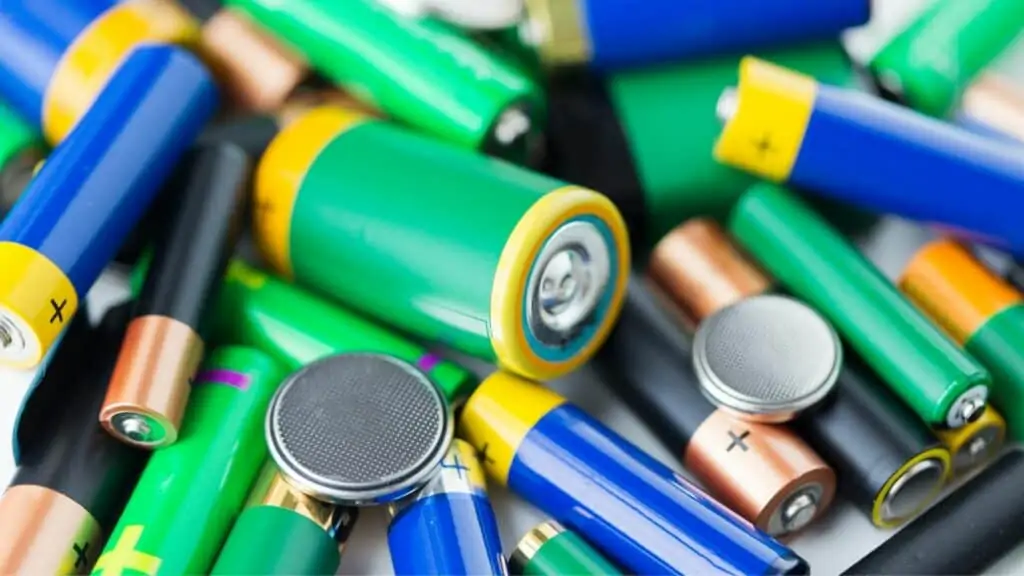
The Quick Answer: Can you bring AA batteries on a plane? AA, AAA, C and D and other dry cell batteries can be carried in your carry on bag on a plane. AA batteries in checked luggage are also allowed, along with other types. Restrictions apply to lithium and other types of batteries.
The Federal Aviation Administration (FAA) has set safety guidelines for travelers bringing batteries along. These guidelines are designed to prevent incidents that are fire-related from happening during air travel.
Closely working with the FAA is the Transportation Security Administration (TSA). The TSA closely monitors potential aviation safety and security issues. Security officers of the TSA are trained to identify potential safety and security battery-related threats in carry-on and checked bags.
Contents
Batteries allowed and prohibited in carry-on and checked bags
Here is a list of the batteries that are allowed and prohibited in carry-on and checked bags.
Batteries allowed in carry on bags
The batteries allowed in carry-on bags include dry cell alkaline batteries consisting of your typical AA batteries as well as AAA, C, D, 9-volt, and button-sized cells. These are the disposable, one-use batteries that power the most common small electrical or electronic items.
Dry cell rechargeable batteries such as Nickel Metal Hydride (NMH) and Nickel Cadmium (NiCad), are also allowed. These kinds of batteries are generally used in flashlights or common electronic devices.
The risk of fire that these batteries pose is relatively small compared to lithium batteries. However, despite this, they should still be either installed in the device or safely packed in their original packaging from the store.

Loose batteries should ideally be put inside individual sealable plastic bags. To prevent a short circuit, you can use tape or some other kind of covering on the battery terminals. This could help ensure safe travel with your batteries.
There are no restrictions on the number of standard AA batteries or AAA batteries so you can bring as many as you want during your flight. But they must be for your own use and not for resale.
However, it is best to still protect them from possible harm by keeping them in their original packaging. This way the TSA security agents won’t give you a hard time when you pass through security.
This is the official FIA information on carrying this type of battery – Pack Safe: Batteries, dry cell including AA batteries.
You can also bring non-spillable wet batteries in your carry-on bags. However, there are limits as to the quantity and size of the batteries. In checked bags, there are no restrictions.
This is the FAA official information on this type of battery – Pack Safe: Batteries, wet, non-spillable
Are AA batteries allowed in checked baggage?
Batteries allowed in checked bags include all of the batteries allowed in carry-on bags, including Double A batteries, except for spare, uninstalled lithium batteries.
The reason for this is that in the cabin, your airline flight crew can better monitor conditions, and if a fire does occur, due to overheating lithium batteries, they can easily have access to the batteries.
But it is still best to pack all spare batteries in your carry-bag whenever possible.
I have written a full article on carrying lithium batteries on a plane so you can be sure not to break the rules.
If you have a device with batteries installed, irrespective of the type, then you should turn off the power of the device and ideally lock or tape the on/off switch to ensure it cannot be accidentally switched on when going through baggage handling.
Batteries Allowed in Checked Bags. Except for spare (uninstalled) lithium batteries, all the batteries allowed in carry-on baggage are also allowed in checked baggage; however, we recommend that you pack them in your carry-on bag whenever possible. In the cabin, airline flight crews can better monitor conditions, and have access to the batteries or device if a fire does occur.
TSA advice on batteries in checked bags
Wet and spillable batteries (wheelchairs and mobility devices)
Spare car batteries, wet batteries, and spillable batteries are prohibited from both your carry-on and your checked baggage. The only time you can bring them on the plane is when they power a mobility scooter or a wheelchair.
It is best to inform the airline ahead of time if you will be taking an electric wheelchair or a mobility scooter with you and if you need to pack a spare battery for it. This will enable the airline to package the battery properly for air travel.
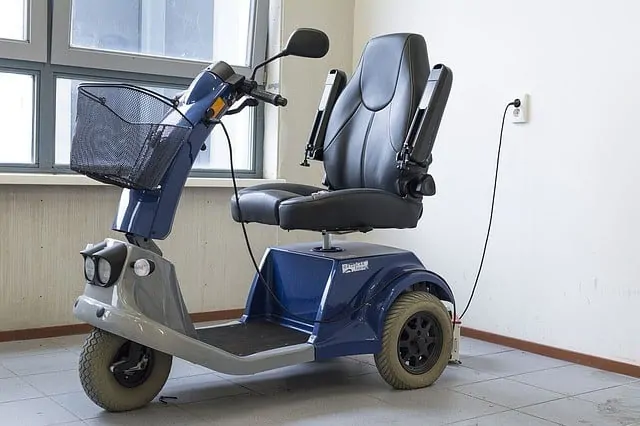
Most battery-powered wheelchairs that are carried in the hold of aircraft are powered by a gas-electrolyte which is a non-spillable battery. See the FAA regulations for these – Pack Safe: Wheelchairs and mobility devices with non-spillable or dry batteries
The motor must be positively deactivated so as to protect it from any inadvertent operation. Whatever method of deactivation applies should be used. Loaders should be aware that it is not enough simply to apply the brakes.
It is important to protect the battery from short-circuiting. To do so, the battery of the wheelchair must be placed inside a box that is attached to it.
Wheelchairs and mobility devices with lithium-ion batteries are allowed. the official FAA regulations can be found here – Pack Safe: Wheelchairs and mobility devices with lithium ion batteries, normal design, battery installed
When the plane is in a flight, there is likely to be movement of other baggage and contents on the hold. Therefore, it is important to protect the wheelchair in such a way as to prevent damage to the associated wiring.
It is important not to disconnect non-spillable batteries. Disconnecting this type of battery is quite difficult to do. If it is improperly done, the risk of a fire can greatly increase.
You should only disconnect the battery if it cannot be deactivated. The terminals of the battery must be protected against short-circuiting. The exposed terminals should be effectively insulated. The airline will likely have the battery removed from the wheelchair and transported in a special container.
If your wheelchair has a spillable battery, then it is important to go early to the airport so that you can inform the airline agents that your wheelchair has a wet cell spillable battery. This way, they are able to do the proper stowing of your wheelchair and battery.
The full FAA regulations can be found here – Pack Safe: Wheelchairs and mobility devices with spillable batteries
Battery power banks
Items that have the primary purpose as a power source like a power bank are considered spare batteries.
You can take these on a plane but there are a number of restrictions on the capacity as they contain lithium batteries. You can find the full details in my article – Can you take power banks on a plane?
Large capacity batteries
What if your battery is bigger than 100 watt-hours? If you have batteries that are larger than 100 watt-hours but smaller than 160 watt-hours, you are allowed to bring two batteries on the plane with you. However, you may not check in these 160-watt-hour batteries. They should be carried on.
Spare batteries
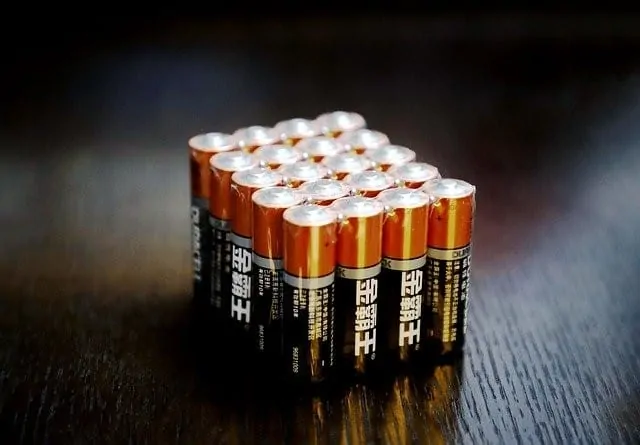
There are no restrictions on the number of dry cell batteries, including AA batteries, you can take on a plane either in your carry on or your checked bags.
Ideally, you should keep these in the manufacturer’s pack as this will ensure that it is not possible for any to become short circuited.
You cannot carry spare lithium batteries in your checked bags so you should just place them in your carry-on bag.
You are limited to two spare (uninstalled) lithium batteries on your flight. You will require approval for higher quantities. You should also protect your spare batteries’ terminals with non-conductive caps or tape.
It is important to hand-carry these items so that the batteries’ terminals don’t touch and cause a short circuit or an explosion.
When a metal object such as coins, keys, tools, or other batteries comes in contact with both terminals of a battery, it creates a circuit or a path for electricity to flow through. This flow of electricity through these unprotected short circuits can cause extreme heat and sparks that can eventually start a fire.
In order to prevent short circuits from taking place, your spare batteries should be kept in their original packaging, a battery case, or a separate pouch or pocket.
Your loose batteries should not be allowed to move around. If you are bringing lots of batteries, make sure to carry them in their own case if not in the manufacturer’s packaging. You can carry as many as you want within any baggage weight restrictions there may be.
You are only allowed to bring batteries and devices that are for personal use including professional use. If you are bringing batteries and battery-powered devices that are for sale or distribution by a vendor, then they are not allowed to be brought on a plane.
External battery chargers
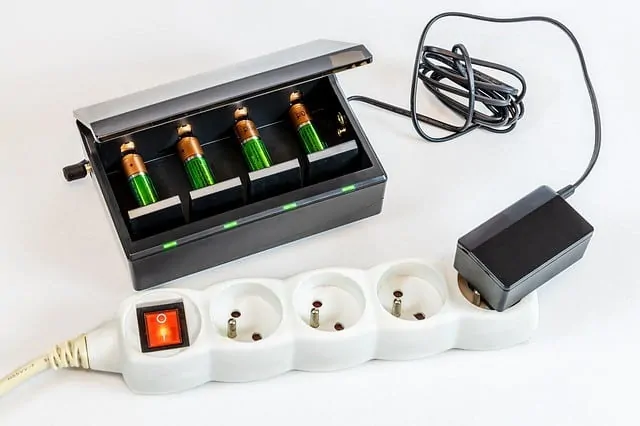
Battery chargers can be packed in carry-on bags or checked bags. Make sure that the electrical cord of the charger is wound tightly around it.
Make sure not to pack your regular batteries in a rechargeable battery charger. These types of batteries are not made for recharging. It can become hazardous if you place regular batteries in a battery charger.
Taking batteries through security
As you go through security, you can keep batteries on your notebook or laptop or other smaller electronic devices.
Generally you will have to remove them from your carry on and place them in a separate tray so they can be screened in the X-ray machine. In fact, you may be required to switch on the device to prove it works as it should so, as well as leaving the battery attached, you should also ensure that it has sufficient charge to show it working.
However, there are frequent changes to TSA rules so if you are unsure if your battery will be allowed, ask an airline representative or the TSA themselves, who are very helpful.

It is important for airlines to ensure that their passengers are aware of the requirements for the carriage of batteries in their cabin or checked baggage. Although this is difficult to achieve, airlines are advised to have appropriate checks in place so that they can find out if passengers comply with the rules or not.
Preparing your batteries
As I have already mentioned above, the contact points of batteries should not touch each other so that they do not create a short-circuit and explode. So, if you are traveling with spare batteries, make sure to cover their contact points with electrical tape.
Otherwise, put your spare batteries in their original box. If you put your batteries in their original box, you will find their specs on the side of the box and security will know what the product is.
Or, you can put your batteries in zip-loc bags. But each battery should have its own bag.
If you are carrying a lot of batteries with you, it is very likely that TSA will stop you and check your batteries. This is why you need to use the methods mentioned above to spare yourself from the possibility of having them confiscated by the security agent.
Battery packing tips
Make sure to place each spare battery that you will be bringing on your flight in its own protective case or plastic bag. Make sure to tape the battery’s contacts so that the terminals will be isolated. This way, the threat of short-circuiting is prevented.
As much as possible, do not put your batteries and related equipment in your checked bags. Keep them in your carry-on baggage. So, in the unlikely event that you should face an incident with them such as overheating, you and the cabin crew will be in a better position to deal with the problem.
If you need to pack your spare batteries, and the original packaging is no longer available, make sure to pack them in such a way that the battery terminals do not come in contact with one another. Make sure also that they don’t come in contact with metal objects like coins, jewelry, or keys.
If you are bringing a battery-powered device in your baggage, make sure that the device is turned off and that it will not accidentally turn on during the flight. If your device has a power switch, make sure to put it in the “off” position. Tape the switch of your battery-powered device in the “off” position so that it remains off during the flight.
To prevent the battery-powered device from any inadvertent activation, carry it well packaged in your baggage. So, if you are bringing a cordless power tool on a plane, make sure that you put it in a protective case with a trigger lock engaged.
Other battery safety tips
It is important that your batteries are bought only from reputable sources. Make sure to use only the batteries that are approved for your device. If you think the battery is a counterfeit, avoid it. These types of batteries may not have been manufactured with the proper safety specifications.
Batteries that are recalled, dead, or damaged should not be carried with you. If you think that your battery has been recalled, go to the manufacturer’s website to check on it. Or else, go to the US Consumer Product Safety Commission to find out.
Make sure to charge only the batteries that are rechargeable. You should not recharge batteries that are non-rechargeable. If you place a non-rechargeable battery in a battery charger, then it may become hazardous or it can damage the battery later during use. Also, use only a charger that is compatible with your rechargeable battery model.
Batteries should not be crushed, punctured, or be exposed to a high degree of pressure. This can cause an internal short-circuit which can result in overheating.

I have been traveling around the world by air since the early 70s and living overseas too. I worked for British Airways for a number of years and I am also a private pilot. About Me

